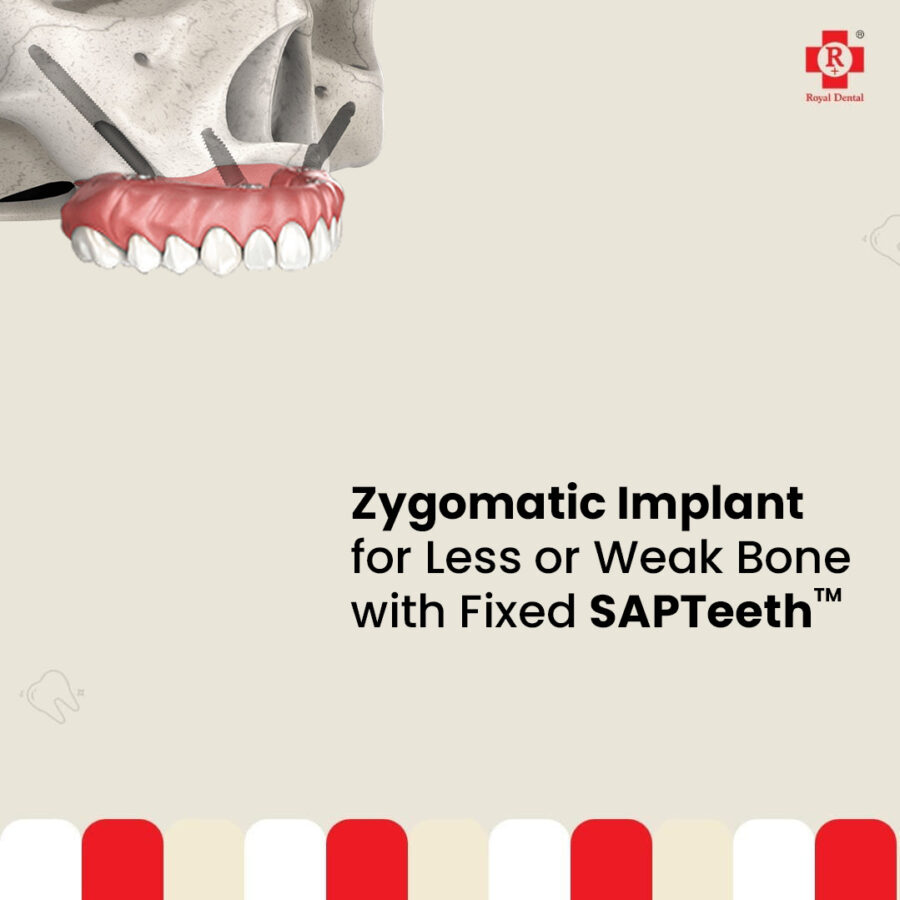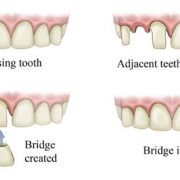Zygomatic implants can also be used as an alternative to traditional dental implants for reconstructing the cheekbone. This article explains all about zygomatic dental implants, the reasons used, and how placed in zygoma bone. Keep reading to learn more about these hidden wonders!

What is a Zygomatic Dental Implant?
Zygomatic Dental Implants way to replace a missing tooth placed in zygoma bone. Neither you nor anyone else can tell the difference. Dental Implants around since the 1950s and in the last 10 years the ADA(American Dental Association) has been accepted at a very high rate of success.
Missing teeth? Don’t let them hold you back. Zygomatic dental implants are an advanced solution for replacing missing teeth in the upper jaw, even when there is limited bone support. At Royal Dental Clinics in Mumbai, we specialize in zygomatic implants, offering a safe and effective way to restore your smile and confidence in just one day.
Zygomatic dental implants are new alternatives that avoid bone grafting and sinus lift and therefore contribute to a shorter and more comfortable treatment. These implants anchored in the zygoma jaw bone, which is close to the zygoma bone (cheekbone). They are much longer in comparison to the traditional implants and may range from 30 mm up to 60 mm. One of the main reasons for zygomatic implant placement is due to bone resorption or reduction in bone quality of the upper jaw.

Why Are These Implants Placed?
Zygomatic implants are used when an individual has suffered from cancer or another disease that has removed much of the cheekbone structure and volume. These implants are used as an alternative to traditional methods of reconstructing the cheekbone, such as with bone grafts. Zygoma bone implants are used in patients who have received radiation therapy to their face. The treatments used in radiation therapy can weaken the bone and make it difficult to use other reconstructive methods. Zygomatic implants are used more often as a reconstructive procedure thanks to advancements in surgical techniques and materials.
How are Zygomatic Implants Drilled?
The first step in installing zygomatic implants is to make an incision under the patient’s skin. The surgeon will then locate the area where the implant should be placed. After the implant is in place, the surgeon will close the incision and apply a dressing. While the incision is healing, the implant is held in place by a small amount of tissue. Once the implant has healed, it will fuse with the surrounding tissue. This will give the patient a more natural-looking cheek and make it easier to smile and speak.
Common risks associated with Zygoma Bone
Zygomatic implants are generally safe and effective, but like any surgery, certain risks are associated with them. These risks include infection, bleeding, nerve damage, swelling, and implant rejection. Some complications may require additional surgery to treat. Other risks are rare, but they include missing the mark and installing the implant in a less-than-ideal location. It’s also important to keep in mind that zygoma implants need good zygoma bone for stability.
Final Words
Zygomatic implants are small but mighty. They used to place implants in less or no jawbone. Implants are used as an alternative to traditional methods of reconstructing the cheekbone, such as with bone grafts. Zygomatic implants are frequently used in patients who have received radiation therapy to their face. The treatments used in radiation therapy can weaken the bone and make it difficult to use other reconstructive methods. Zygomatic implants are used more often as a reconstructive procedure thanks to advancements in surgical techniques and materials.
Follow Us For More Updates






so nice royal dental clinici